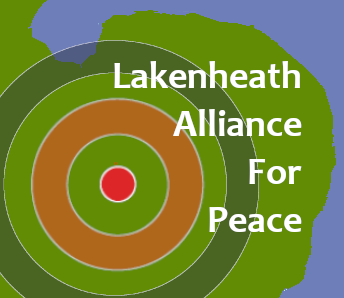What is the carbon footprint of a nuclear bomb?
A bomb on its own does not emit carbon dioxide… It’s the infrastructure, the construction (cement emits a lot), fossil fuel use, manpower, consumption, supply chains etc that all contribute.
A study published in the Energy & Environmental Science journal has documented that using 1/1000 of the total capacity of a full-scale nuclear war weaponry would induce 690 tonnes of CO2 to penetrate the earth’s atmosphere. This is more than the annual carbon footprint of the United Kingdom (Clark et al.).3 Nov 2022
Scientists for Global Responsibility estimated in a 2022 report that the global military carbon footprint is approximately 2,750 million tonnes of carbon dioxide equivalent (MtCO2e) or 5.5% of global emissions.
“If the world’s militaries were a single nation, our estimate would put it fourth – behind China, the USA, and India – but above Russia and Japan .This means that the reduction of a potentially large source of carbon emissions is currently not widely recognised, let alone prioritised. Given the degree of control that governments have over the sizes of their militaries, there is a huge and largely unrecognised opportunity to reduce emissions.”
“Our estimate also does not include climate heating due to the effects of military aviation emissions in the stratosphere.”
Reducing emissions: low carbon weapons… or peace?
“In general, the military approach is to focus on lower carbon technological change to maintain advantage on the battlefield. Britain’s Ministry of Defence (MOD) summarises this as being able to “fight and win in ever more hostile and unforgiving physical environments”. The US DOD puts it even more simply: “Less fuel, more fight”.
“The obvious alternative to trying to find slightly less environmentally damaging ways to wage war is to more vigorously pursue peace.”
Global Military Carbon Emissions by Dr Stuart Parkinson, of Scientists for Global Responsibility
Secrecy and unaccountability in reporting military emissions….
The US military is vast in scale – it has more than 750 overseas US military bases in about 80 countries and about 173,000 troops in 159 countries, with a carbon footprint larger than any other institution on earth. But when it comes to disclosure of its emissions of greenhouse gases, it’s been kept off the books – and has been let off the hook.
The environmental impact of the US military machine was documented in two 2019 reports by the Watson Institute, which revealed it to be the world’s largest institutional consumer of hydrocarbons, belching out more emissions than industrialised nations like Portugal and Denmark.
Yet its contribution to heating the planet is largely overlooked, the US government having lobbied for an exemption for military activity from the 1997 Kyoto Protocol that set binding emissions targets for signatory nations. During the 2015 Paris talks, the exemption was removed, but reporting of military emissions remains optional.
‘Elephant in the room’: The US military’s devastating carbon footprint Lorraine Mallinder in Al Jazeera
The UK military’s total carbon ‘bootprint’ is estimated to be approximately 11 million tonnes of CO2. This is more than 11 times the figure the MoD usually claims, and is similar to the emissions produced by over six million UK cars in a year – producing more carbon emissions than 60 individual countries combined.
Peace Education Scotland ‘Environmental Costs of Nuclear Weapons’
Nukes: Impact on the Environment and climate ICAN
The environmental legacy of nuclear production
‘Nuclear weapons production leaves a nasty legacy both for people and the environment. Around the world, nuclear weapons facilities have contaminated land and water with radioactive waste lasting at least 100,000 years. Efforts to clean up the sites have cost billions of dollars over decades – and are still largely unfinished. The five case studies here provide just a preliminary look into the devastating global environmental consequences of building the bomb.’
Unspeakable Suffering: the Humanitarian Impact of Nuclear Weapons
An incredibly detailed and shocking report by Reaching Critical Will (WILPF) looking at the Impact of nuclear weapons on Health, Environment, the Economy, Law, and a lot more.
Environmental Costs of Nuclear Weapons by Peace Education Scotland
The two most immediate threats to human survival are climate change and nuclear weapons. This booklet demonstrates that these two existential threats are closely linked.
Climate change will increase conflicts over resources, and even a limited use of nuclear weapons could trigger a ‘nuclear winter’. Nuclear weapons testing has already caused lasting environmental damage around the world, while present day military installations also leave us a legacy of radioactive and toxic waste.
Nuclear Famine (2022) International Physicians for the Prevention of Nuclear War IPPNW
A landmark report, Nuclear Famine (2022), published by IPPNW summarises the latest scientific work which shows that a so-called “limited” or “regional” nuclear war would be neither limited nor regional. A war that detonated less than 1/20th of the world’s nuclear weapons would still crash the climate, the global food supply chains, and likely public order. Famines and unrest would kill hundreds of millions, perhaps even billions. The findings come at a time of greatly heightened tensions among nuclear states and amid warnings that we are closer to nuclear war than we have ever been.
